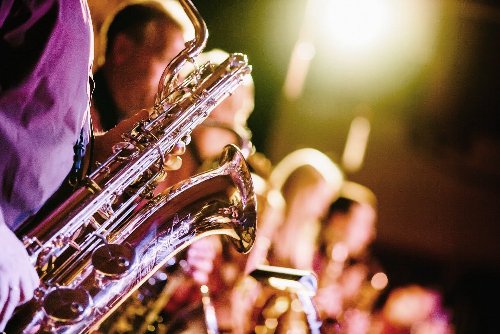
Musicianship blossoms through more than just practice on an instrument or voice; it is deeply rooted in the ability to hear, understand, and interpret sound. Developing ear training sharpens this critical skill, allowing musicians to identify tones, intervals, rhythms, and harmonic progressions with clarity and confidence. This auditory finesse not only enriches performance but also fuels creativity, improvisation, and composition. Building ear training into daily routines transforms passive listening into an active, insightful experience, laying the foundation for profound musical growth. The journey toward refined musicianship starts with attentive listening and gradually expands through targeted exercises that challenge and expand auditory perception.
How to Recognize Tones and Intervals
Recognizing tones and intervals is the cornerstone of ear training and involves distinguishing the pitch of individual notes as well as the distance between them. Training begins with listening to single notes and learning to identify their pitch accurately. Progressing to intervals, musicians practice comparing two notes played sequentially or simultaneously, familiarizing themselves with the sound of common intervals like major thirds, perfect fifths, or minor sevenths. Associating intervals with well-known melodies can be an effective memory aid; for example, the opening notes of Here Comes the Bride often represent a perfect fourth. Consistent practice with interval recognition helps internalize pitch relationships, enabling musicians to anticipate harmonic movement and play by ear with greater ease.
Why Rhythm and Timing Matter
Rhythm and timing form the heartbeat of music and are as essential to ear training as pitch recognition. Developing a keen sense of rhythm involves distinguishing note durations, rests, and patterns within a musical phrase. Musicians sharpen timing skills by clapping, tapping, or vocalizing rhythms alongside metronomes or drum patterns. Exploring syncopation, polyrhythms, and complex time signatures challenges perception and refines internal pulse. A well-trained ear detects subtle shifts in tempo and groove, empowering musicians to stay locked in with ensembles or add expressive nuance during solos. Understanding rhythm deeply complements pitch awareness, rounding out the aural skills needed for complete musical fluency.
How to Practice Ear Training Effectively
Effective ear training blends structured exercises with immersive listening experiences to cultivate precise auditory skills. Tools such as apps, software, and online courses provide interactive drills on intervals, chords, and melodies, reinforcing recognition through repetition and feedback. However, equally valuable is active listening to diverse music genres, focusing on identifying instruments, chord changes, or vocal harmonies. Engaging with sheet music while listening can bridge the gap between visual notation and sound. Setting achievable daily goals and gradually increasing difficulty keeps the practice stimulating and productive.
How Harmony Shapes Musical Perception
Harmony weaves multiple tones into a rich tapestry that defines the character and emotion of music. Ear training that explores harmony involves recognizing chords, progressions, and tonal centers, allowing musicians to anticipate and interpret musical direction. Understanding major, minor, diminished, and extended chords sharpens the ability to distinguish subtle color changes in music. Training also involves listening for resolutions and tensions within chord sequences, which enhance expressive playing or composing. Developing this sensitivity not only supports improvisation but deepens appreciation for intricate arrangements and collaborative interplay in ensembles. Mastering harmony through attentive ear work unlocks a more profound connection with music's emotional language.
How to Apply Ear Training in Performance
Translating ear training skills into performance enriches musical expression and spontaneity. Musicians who can identify intervals, rhythms, and harmonies on the fly are better equipped to adapt during rehearsals or live shows. This ability supports improvisation, enabling musicians to respond creatively to others or explore new ideas confidently. Ear-trained performers also refine intonation, blending perfectly with groups and navigating key changes smoothly. Practicing sight-singing or playing by ear strengthens the link between auditory perception and physical execution. Embracing ear training as an integral part of musicianship ultimately elevates performance from mechanical reproduction to an inspired, interactive experience.
Developing ear training is a rewarding path toward greater musicianship that integrates listening, understanding, and creative expression. By recognizing tones, mastering rhythm, exploring harmony, and applying these skills in performance, musicians cultivate a powerful auditory intuition. This heightened sensitivity enriches every aspect of musical life from practice to collaboration to composition. The process demands patience, consistent effort, and a passion for discovery, but the resulting clarity and confidence in sound become indispensable companions on the artistic journey. Cultivating the ear transforms music from notes on a page to a vibrant, living conversation.
EDITORIAL POLICY
The Flash List is dedicated to providing trustworthy editorial content by maintaining strict ethical standards, journalistic integrity, and credible professionalism regardless of any remuneration as working media. The Flash List is not affiliated with third-party companies mentioned and makes no endorsement or guarantee expressed or implied. The preceding article, which contains affiliated link(s) for which compensation was received, is intended for informational reference only and does not constitute advice of any kind. Moreover, a qualified professional should be consulted regarding any lifestyle consideration, medical treatment, or monetary transaction, etc. Content is published in accordance with USFTC regulations and terms and conditions.
MORE ON THE FLASH LIST
































